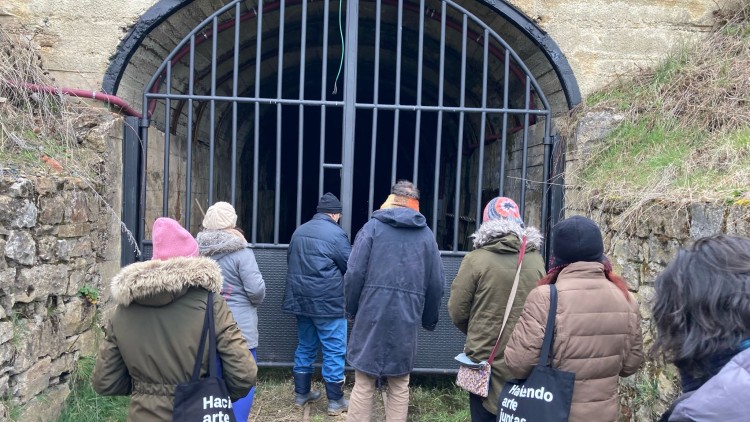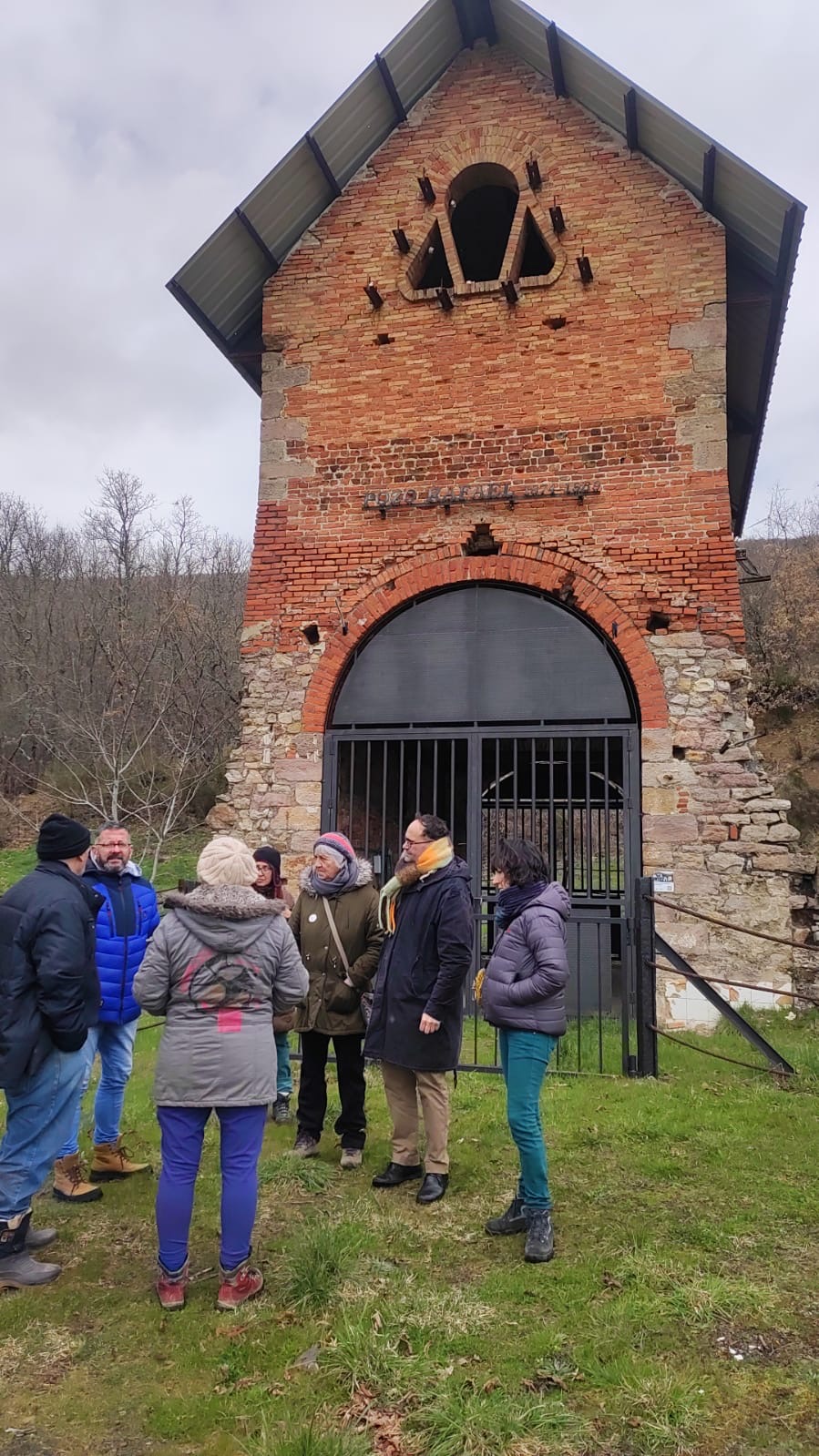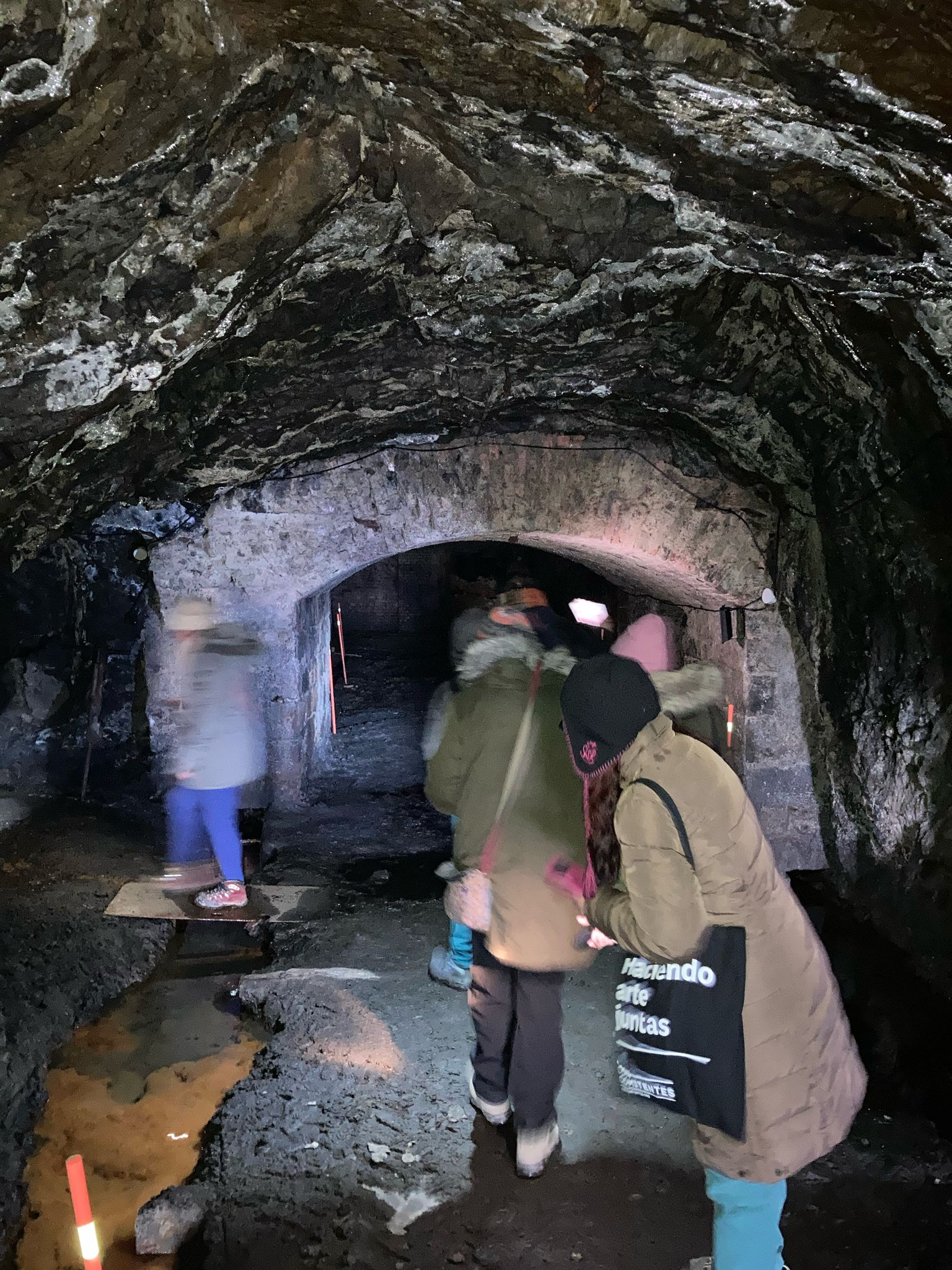Doors and windows are the weakest parts of a home.

The comissioners work on the concept of leaving the past behind, facing the future with joy and accepting the more than human as part of the territory.
Aquí puedes leer el texto en español / Here you can read the text in spanish
Clara, one of the comissioners, told us that doors and windows are the weakest parts of a property. She said this after we did an exercise in which we each walked through a door in the library, leaving behind a letter we had written to ourselves explaining what we wanted to leave behind by getting involved in this project. This act, in addition to being a performative act that set our bodies in motion, was necessary in view of certain dynamics that the group was beginning to verbalise about the project and its position in the village.
This exercise brings to mind ideas such as: ‘I like my door because it creates a room of one´s own’, ‘the door is the boundary between the familiar and the social’ or ‘the diana (groups of popular musicians who parade through the streets on the town's festival day to entertain and raise money for the festivities, with residents opening their doors to welcome them) as a space where the door becomes blurred’. Doors and their thresholds continue to be very present in our imagination for the project.
In this session, we also decided to integrate the more than human element into the project. And, to try to give it a voice, we wrote stories in which some of us spoke as sewage water from coal, as decomposing plant waste, as leaves and branches from an oak tree, or as our mothers' and grandmothers' aprons.
What's more, today we have a very special outing. Jose Luís, the president of ARPI (Association for the Recovery of Industrial Heritage) has invited us to visit an abandoned mine, the San Rafael Pit in Vallejo de Orbó, a village 4 kilometres away.
The experience is fantastic. We walk through the door and explore part of a gallery, listening to the sounds of water flowing from the highest part of the mine and seeing the range of colours on the walls thanks to the torches we have brought with us. It becomes a communal experience that allows us to connect with each other, but also with the work of the past.

Las puertas y las ventanas son las partes más débiles de un hogar.
Las comitentes trabajan sobre el concepto de dejar atrás, de afrontar lo que viene en el futuro con alegría y de aceptar lo más que humano como parte del territorio.
Clara, una de las comitentes, nos ha dicho que las puertas y las ventanas son las partes más débiles de una propiedad. Y lo ha dicho tras hacer un ejercicio en el que traspasábamos, individualmente, una puerta de la biblioteca dejando dentro una carta que habíamos escrito contándonos, a nosotras mismas, qué es lo que queremos dejar atrás al involucrarnos en este proyecto. Este acto, además de ser un acto performativo que ha puesto nuestros cuerpos en movimiento, era necesario pensando en ciertas dinámicas que el grupo estaba empezando a verbalizar sobre el proyecto y sobre su posición en el pueblo.
Este ejercicio nos despierta ideas como: “me gusta mi puerta porque construye una habitación propia”, “la puerta es el límite entre lo familiar y lo social” o “la diana (grupos de música popular que recorren las calles el día de la fiesta del pueblo para animar y recaudar dinero para la fiesta y en el que los vecinos abren sus puertas para recibirles) como espacio en el que la puerta se difumina”. Las puertas y sus umbrales continúan estando muy presentes en nuestro imaginario para el proyecto.
En esta sesión nos habíamos planteado, además, integrar en el proyecto lo más que humano. Y, para intentar darle voz, escribimos un relatos en las que algunas de nosotras hablamos como aguas negras por el carbón, como desechos vegetales en descomposición, como hojas y ramas de un roble o como mandiles de nuestras madres y abuelas.
Además, hoy tenemos una salida muy especial. Jose Luís, el presidente de ARPI (Asociación por la Recuperación del Patrimonio Industrial) nos ha invitado a visitar una mina abandonada, el Pozo San Rafael en Vallejo de Orbó, un pueblo a 4 kilómetros.
La experiencia es fantástica. Cruzamos su puerta y recorremos parte de una galería, escuchando como los sonidos del agua discurren desde la parte más alta de la mina y viendo la gama de colores de sus paredes gracias a las linternas que nos hemos traído, se convierte en una experiencia comunitaria que nos permite conectarnos entre nosotras, pero también con los trabajos del pasado.

